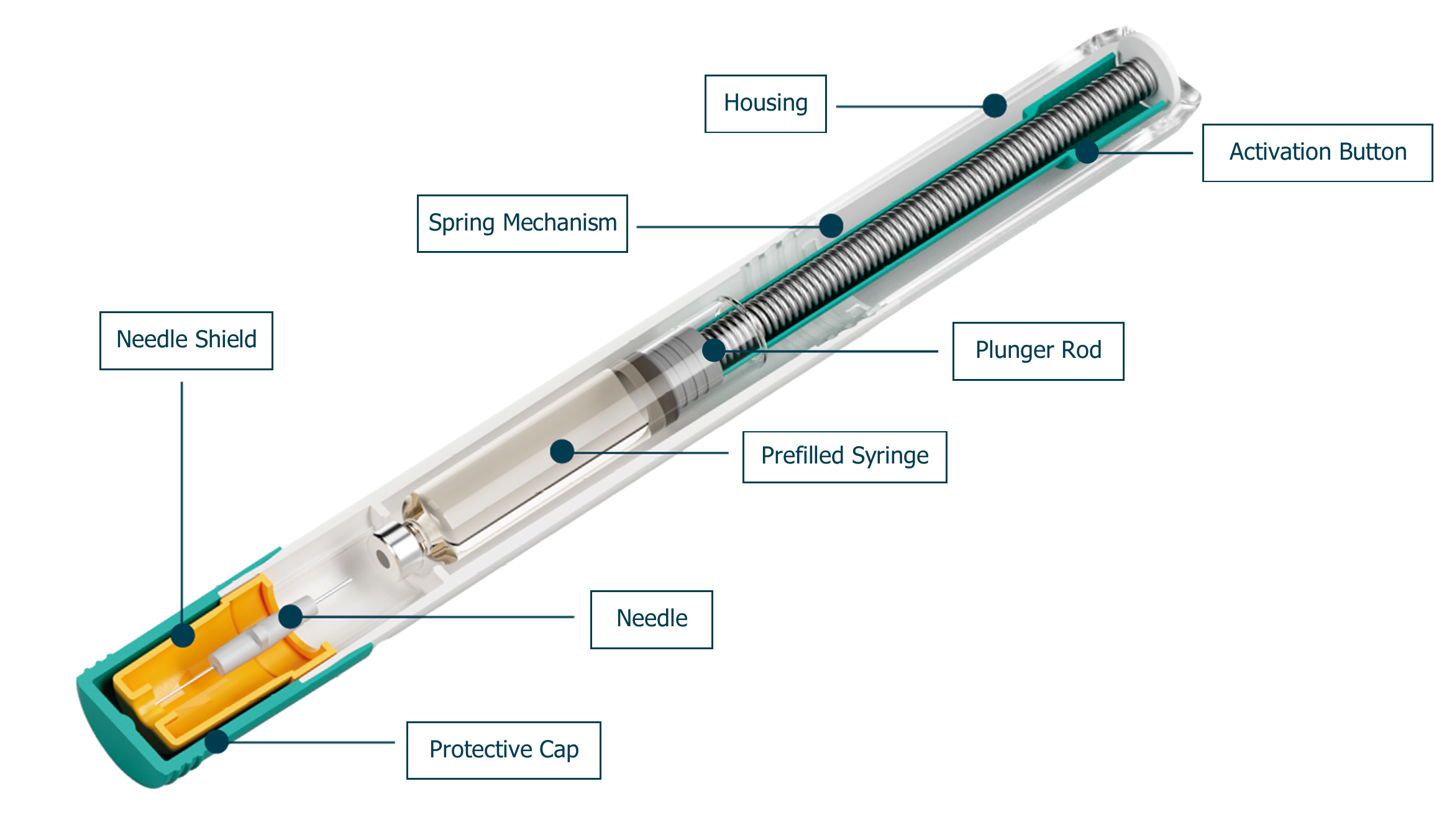Scroll
How Bowl Feeders Work in Autoinjector Manufacturing
In the fast-evolving world of medical device production, precision, efficiency, and reliability are non-negotiable.
Autoinjectors are portable medical devices designed to deliver a premeasured dose of medication into the body, typically through subcutaneous (under the skin) or intramuscular (into the muscle) injection, automatically and safely. It enables patients to self-administer medication with minimal training.
The bowl feeder, plays a pivotal role in streamlining the production of autoinjectors, ensuring that core components are handled seamlessly, defects are minimised, and production can scale to meet global demand. Here’s a closer look at how bowl feeders work and why they’re indispensable in autoinjector manufacturing.
Core Components of an Autoinjector
The functionality of an autoinjector relies on several key components working together. These core elements are:
- Housing (Outer Shell): Provides ergonomic grip and structural support.
- Needle: Includes the needle and mechanism to extend/retract it safely.
- Needle Shield or Cover (Post-Injection): Prevents accidental needle sticks before and after use.
- Prefilled Syringe (Cartridge): Contains the medication to be injected.
- Plunger Rod: Pushes the medication out of the syringe or cartridge through the needle.
- Spring Mechanism: Generates the force required to push the plunger and deliver the dose.
- Activation Button: Starts the injection process.
- Inspection Window: A visual cue, like a window or marker to provide confirmation of successful injection.

How Bowl Feeders work in autoinjector manufacturing?
1. Vibration Motion
The bowl feeder vibrates at a tuned frequency, causing parts to move along a spiral track around the edge of the bowl.
2. Component Handling
Small parts like syringe barrels, plungers, springs, needle assemblies, or safety caps are loaded into the bowl, often from a hopper for continuous supply. The vibration propels these components upward along the track.
3. Orientation Mechanisms
The bowl’s interior is customised with ramps, slots, or guides specific to each component. For example:
Syringe Barrels: Tooling ensures they exit flange-up for plunger insertion.
Springs: Guides align them vertically or horizontally, depending on assembly needs.
Safety Caps: Cutouts orient them to fit over the needle end. Misaligned parts fall back into the bowl or are diverted, ensuring only correctly positioned items proceed.
4. Integration with Assembly
At the track’s exit, components are fed directly to robotic arms, conveyors, or workstations. For instance, a bowl feeder might deliver plungers to be pressed into syringe barrels or springs to be loaded into the housing, aligning with the high-speed, precision demands of autoinjector production.
5. Efficiency and Precision
The vibration rate and tooling are fine-tuned to match the component’s size, shape, and weight, as well as the production pace. This ensures a steady, error-free supply, critical for assembling complex devices like autoinjectors where tolerances are tight and quality is non-negotiable.
In autoinjector manufacturing, RNA bowl feeders streamline the handling of core components, which are then fed to automated assembly stations where they’re integrated step-by-step. This process reduces manual labour, minimises defects, and enables scalable, high-volume production while meeting the medical industry’s rigorous standards.